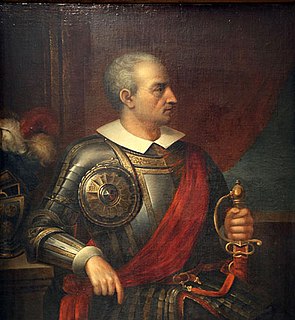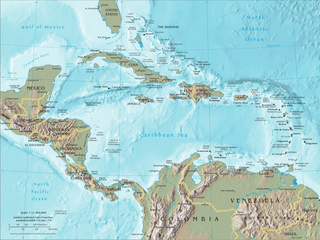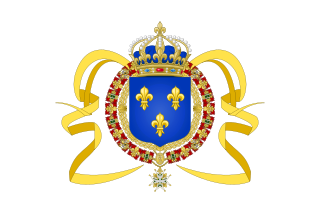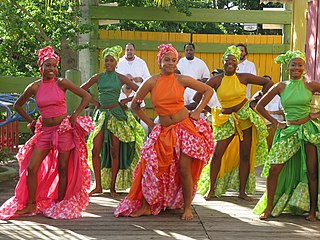Related Research Articles

Diego de Almagro, also known as El Adelantado and El Viejo, was a Spanish conquistador known for his exploits in western South America. He participated with Francisco Pizarro in the Spanish conquest of Peru. While subduing the Inca Empire he laid the foundation for Quito and Trujillo as Spanish cities in present-day Ecuador and Peru respectively. From Peru Almagro led the first Spanish military expedition to central Chile. Back in Peru, a longstanding conflict with Pizarro over the control of the former Inca capital of Cuzco erupted into a civil war between the two bands of conquistadores. In the battle of Las Salinas in 1538 Almagro was defeated by the Pizarro brothers and months later he was executed.

A slave rebellion is an armed uprising by enslaved people, as a way of fighting for their freedom. Rebellions of enslaved people have occurred in nearly all societies that practice slavery or have practiced slavery in the past. A desire for freedom and the dream of successful rebellion is often the greatest object of song, art, and culture amongst the enslaved population. Many of the events, however, are often violently opposed and suppressed by slaveholders.

The era of piracy in the Caribbean began in the 1500s and phased out in the 1830s after the navies of the nations of Western Europe and North America with colonies in the Caribbean began combating pirates. The period during which pirates were most successful was from the 1660s to 1730s. Piracy flourished in the Caribbean because of the existence of pirate seaports such as Port Royal in Jamaica, Tortuga in Haiti, and Nassau in the Bahamas. Piracy in the Caribbean was part of a larger historical phenomenon of piracy, as it existed close to major trade and exploration routes in nearly all the five oceans.

Saint-Domingue was a French colony from 1659 to 1804 on the Caribbean island of Hispaniola; the island that now hosts two countries, the Dominican Republic and Haiti. The name was also used, at times, for the island of Hispaniola as a whole, all of it, nominally, being at times a French colony. The Spanish form of the name, Santo Domingo, also was used at times for the island as a whole. The border between the French-speaking Haiti and the Spanish-speaking Dominican Republic was not established until after the Dominican Republic's declaration of independence in 1844.

The Pearl Islands is a group of 200 or more islands and islets lying about 30 miles (48 km) off the Pacific coast of Panama in the Gulf of Panama.

Pearl hunting, also known as pearling, is the activity recovering pearls from wild molluscs, usually oysters or mussels, in the sea or freshwater. Pearl hunting used to be prevalent in the Persian Gulf region and Japan. Pearl diving began in the 1850s on the northern and north-western coast of Western Australia, and started in the Torres Strait Islands in the 1860s, where the term also covers diving for nacre or mother of pearl found in what were known as pearl shells.

Jean-David Nau, better known as François l'Olonnais, was a French pirate active in the Caribbean during the 1660s.

The Black Pearl is a fictional ship in the Pirates of the Caribbean film series. In the screenplay, the Black Pearl is easily recognized by her distinctive black hull and sails. Captained by Captain Jack Sparrow, she is said to be "nigh uncatchable". Indeed, in the first three films she either overtakes or flees all other ships, including the Interceptor and the Flying Dutchman. Her speed is partly derived from the large amount of sails she carries, and partly supernatural. She is noted in At World's End as being "the only ship that can outrun the Dutchman."

Afro–Puerto Ricans are Puerto Ricans who are of predominant or partial African descent. The history of Puerto Ricans of African descent begins with free African men, known as libertos, who accompanied the Spanish Conquistadors in the invasion of the island. The Spaniards enslaved the Taínos, many of whom died as a result of new infectious diseases and the Spaniards' oppressive colonization efforts. Spain's royal government needed laborers and began to rely on African slavery to staff their mining and fort-building operations. The Crown authorized importing enslaved West Africans. As a result, the majority of the African peoples who entered Puerto Rico were the result of the Atlantic slave trade, and came from many different cultures and peoples of the African continent.

Vasco Núñez de Balboa was a Spanish explorer, governor, and conquistador. He is best known for having crossed the Isthmus of Panama to the Pacific Ocean in 1513, becoming the first European to lead an expedition to have seen or reached the Pacific from the New World.
Juan Valiente was a Spanish black conquistador who participated in the expeditions of Pedro de Almagro in present-day Guatemala and Chile. Taken into captivity as a slave in Africa, he was transported to Mexico, where he was purchased by a Spaniard who returned with him to Spain. As a young man, Valiente negotiated a kind of lease - permission to join a conquistador's expedition for the chance to earn profits and buy his freedom. He ended up staying in Chile.
Laurens Prins, anglicized as Lawrence Prince, was a 17th-century Dutch buccaneer, privateer and an officer under Captain Sir Henry Morgan. He and Major John Morris led one of the columns against Panama in 1671.
Henri Caesar, also known as Black Caesar, was a legendary 19th-century Haitian revolutionary and pirate. Efforts to find historical evidence of his existence have been unsuccessful. According to works of fiction, he was a participant in the Haitian Revolution under Dutty Boukman and Toussaint Louverture as well as active in piracy for nearly a 30-year period during the early 19th century.

In the history of the Dominican Republic, the period of España Boba lasted from 1809 to 1821, during which the Captaincy General of Santo Domingo was under Spanish rule, but the Spanish government exercised minimal powers because its resources were attenuated by the Peninsular War and the various Spanish American wars of independence. The period ended when Dominican officials declared a short-lived independence on 30 November 1821. In February 1822, Haiti annexed former Santo Domingo, leading to an occupation that lasted until 1844.

In the history of Panama, the earliest known inhabitants were the Cueva and Coclé tribes, but they were drastically reduced by disease and fighting when the Spanish arrived in the 16th century. But some moved out of Panama to have children and increase population.

Afro-Panamanians are Panamanians of African descent. The Afro-Panamanian population can be mainly broken into one of two categories "Afro-Colonials", Afro-Panamanians descended from slaves brought to Panama during the colonial period, and "Afro-Antilleans," West Indian immigrant-descendants with origins in Trinidad, Martinique, Saint Lucia, Guadeloupe, Dominica, Grenada, Haiti, Belize, Barbados and Jamaica, whose ancestors were brought in to build the Panama Canal. Afro-Panamanians can be found in the towns and cities of Colón, Cristóbal and Balboa, the Río Abajo area of Panama City, the Canal Zone and the province of Bocas del Toro.
The western Caribbean zone is a region consisting of the Caribbean coasts of Central America and Colombia, from the Yucatán Peninsula in southern Mexico to the Caribbean region in northern Colombia, and the islands west of Jamaica are also included. The zone emerged in the late sixteenth century as the Spanish failed to completely conquer many sections of the coast, and northern European powers supported opposition to Spain, sometimes through alliances with local powers.
The Cimarrons in Panama were enslaved Africans who had escaped from their Spanish masters and lived together as maroons. In the 1570s, they allied with Francis Drake of England to defeat the Spanish conquest. In Sir Francis Drake Revived (1572), Drake describes the Cimarrons as "a black people which about eighty years past fled from the Spaniards their masters, by reason of their cruelty, and are since grown to a nation, under two kings of their own. The one inhabiteth to the west, the other to the east of the way from Nombre de Dios".

Diego Caballero was a Spanish merchant and minor Conquistador in the Caribbean area and in the islands off the coast of Venezuela. He organised raids on natives, whom he then used as slaves in pearl fishing and other enterprises. He amassed enormous wealth in America, which he invested in further enterprises throughout the Spanish Empire. He thus became enormously wealthy, perhaps the most important Spanish merchant of his day. He held, or purchased, several official posts, in the service of the King, Charles V and in Seville.
Spanish expeditions led by Columbus and Alonso de Ojeda reached the coast of present-day Venezuela in 1498 and 1499. The first colonial exploitation was of the pearl oysters of the "Pearl Islands". Spain established its first permanent South American settlement in the present-day city of Cumaná in 1502, and in 1577 Caracas became the capital of the Province of Venezuela. There was also for a few years a German colony at Klein-Venedig.
References
- ↑ Ruth Pike, "Black Rebels: The Cimarrons of Sixteenth Century Panama," The Americas 64/2 (2007): 245-46, citing the original source, Pedro de Aguado, Historia de Venezuela, Book 9, chapter 13.